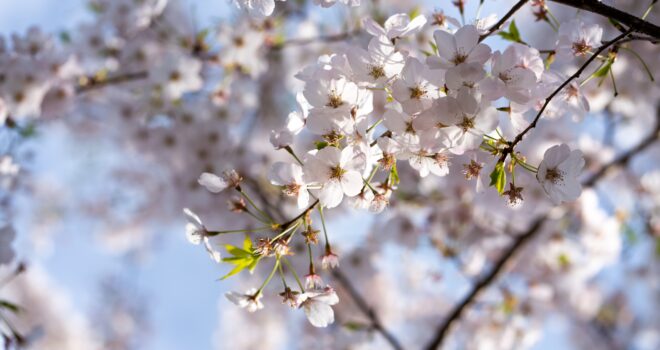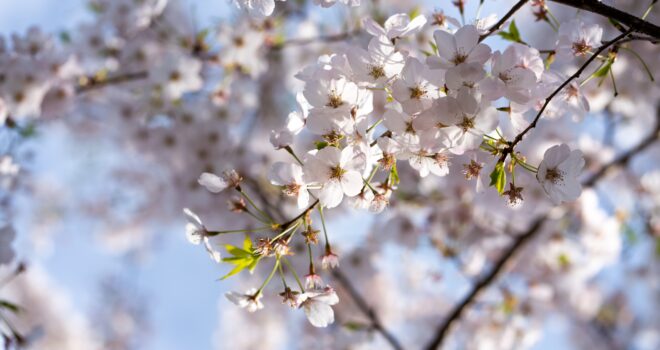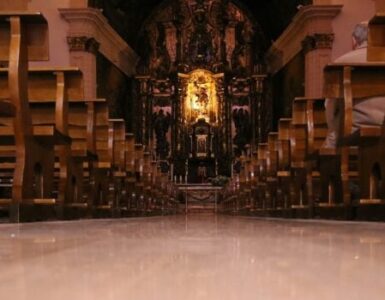Spring comes late but most delightfully to Wyoming, where I currently reside. The daffodils and crocuses are starting to bloom; and even if snowstorms occur every few weeks, most of the past month has been quite warm. The streams are growing with snowmelt off the mountains, and I can hear the birdsong of Phoebes’ glancing from willow and cottonwood trees as I stroll along.
As the circle of the year progresses, it seems appropriate to use the seasons as occasions for delving into the arts; musically, Vivaldi’s Four Seasons might spring to your mind (pun intended). However, I wanted to look at lesser known music. Thinking of springtime and music that celebrates it, a beautiful 17th century madrigal occurred to me. It is by the Italian baroque composer Claudio Monteverdi, and is a setting of a love poem by Petrach: Zefiro torna e il bel tempo rimena. Two excellent performances can be found here (by an all male ensemble) and here (with a mixed ensemble and more accompaniment), and a full translation here.
One of the very first humanists, the Italian poet Petrach was highly influential in bringing ancient Roman authors into the prominence which they would enjoy in the Renaissance. Among his poems or “Canzoniere“, a collection of over three hundred love poems, is this poem describing the return of spring and Petrarch’s sorrow for his beloved Laura, a Beatrice-like figure who was already married when Petrarch first saw her. Consequently unapproachable, his love for her is frustrated and hopeless. Petrarch wrote in his “Letter to Posterity” that this was “an overwhelming but pure love affair—my only one, and I would have struggled with it longer had not premature death, bitter but salutary for me, extinguished the cooling flames. I certainly wish I could say that I have always been entirely free from desires of the flesh, but I would be lying if I did”. Laura died in the springtime; and therefore this poem reminds him of her absence.
Claudio Monteverdi’s setting is a masterwork of word painting—as the technique of composition is known where the mood and sound of the music is made to mimic in some way the topic of the text. The poem opens with references to ancient mythological figures: Zephyrus, the gentle god of the west wind “returns and brings fair weather”. Monteverdi’s introduction of “Zephiro torna”—Zepherus returns—is lilting and syncopated. As the voices grow they sing of the white and red flowers of springtime. Joyful and bouncy, the phrases weave together like blossoms and grasses bobbing in a warm wind.
Skies grow clear and meadows smile, Petrarch writes, while Jupiter and his daughter Venus, the goddess of love, rejoice. In fact, “every living being returns to love!” But wait— “for me, alas, the heaviest sighs return”. Suddenly the music changes and slows. Languishing like the poet, the vocal lines droop in dissonance after dissonance because the one who possessed the keys to Petrarch’s heart is absent.
And it gets worse. Because the poet’s beloved is dead, not only the songs of little birds and spring flowers, but even the sweet and virtuous actions of women have become a desert waste “of bitter and savage creatures.” On the words fere aspre et selvagge which conclude the poem—the “rough/harsh and wild/savage beasts”—Monteverdi’s grinds his lines together in frightful dissonances before resolving on a minor chord.
Like Wyoming springtimes which can fluctuate from sleet and hail to sunny blue skies in a matter of hours, Monteverdi’s setting of Petrarch’s poetry is a remarkable artistic portrayal of spring’s double-sidedness. Charming, warm, and lighthearted in the opening half, Zefiro torna e il bel tempo rimena suddenly plunges back into a winter of sorrow. Even if your spring is going better than Petrarch’s was (and I really hope it is), I suggest taking a moment to listen to this fascinating piece of music wafting to us over the centuries from the golden age of the Italian baroque.
Photo by Tali Khrab on Unsplash












